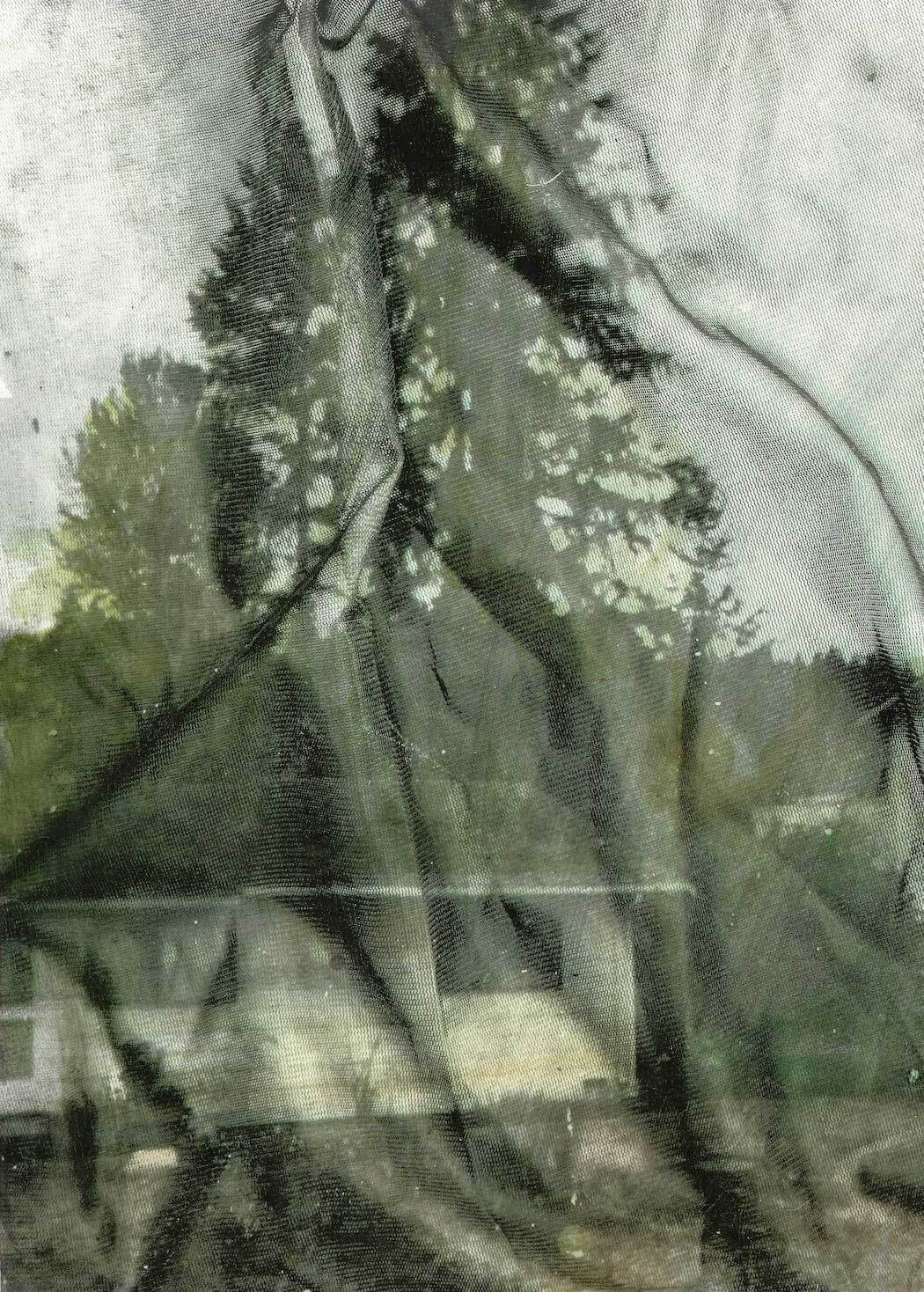Eva Nielsen’s works present visual dichotomies, where rasterized black and white surfaces, are mixed with painterly landscapes. Her big compositions exclude the figures, showing deserted modest buildings, views from a higher point to a shore or empty mountains. Her work is very curt, very different to what I present you usually in Passion Painting. What attracts me in the works is the floating space that she creates in this in-between. Her work reminds me of Henriette Grahnert in the composition. www.eva-nielsen.com / Instagram @_eva_nielsen

photo by @vincentferrane
Eva Nielsen answered my questions.
KALTBLUT: How do you start your day?
I would hope to be a painter who loves working in the morning very early but in fact not at all. I would say that I particularly like painting at the end of the day so it does not conform to the image of the painter who wants to work as soon as waking up.

KALTBLUT: If you were to paint one thing over and over what would it be?
I think it would be a window. If possible with some cement around. If possible, rather oval. In general, any breakthrough on an exterior fascinates me. It’s always the question of where we are, from which point of view we see things, in which place we project ourselves.
KALTBLUT: Do you like exhibiting your work? What do you do on the openings?
Yes, I think I like to exhibit my work. It is part of the overall process. I can hardly imagine that I am the only one who sees them. It is not a question of ego, it is something else. Just a way to give another dimension to the paintings, make them exist in space differently and let them lead their lives. I am always happy and excited to imagine an exhibition, a project. The openings are always strange moments, out of time. There is the excitement, and the fallout because the project is already finished in away. And this excitement is twofold because there is the pleasure of seeing work in space appear, the joy of sharing this experience with others, but at the same time, it is always stressful. In short, full of contradictory feelings.

KALTBLUT: What is your favourite place to think about a new painting?
It is more a succession of places. I can start thinking about a new project in the studio, continue my drawing on the train, think about it again as I walk around the city and get back to it later in the evening. This stratification is linked to my way of working with painting.
KALTBLUT: What is your relation to past painters, and history of art?
I rather think of seeking a discussion with the past painters. Everything is linked and connected, and I find it interesting. I especially like the works of fascinating and inspiring artists like Georgia O’Keeffe, Helen Frankenthaler, Barbara Hepworth, Lygia Clark, Kay Sage…

KALTBLUT: Which question would you like to ask your painting Idol?
I would like to ask them questions about their doubts, their convictions, their desires, their hopes. How they continuously redefined their work: was it in waves or gradually? Did they have projects that they had to abandon? Did they have time to paint as they wished? Technically, I do not believe in unstoppable certainties, I think we all have desires at specific times so I will have not a lot of technical questions.
KALTBLUT: How did you develop this work you’re doing now?
I try to work different motifs simultaneously in order to keep an evolution. I like to work on several paintings at the same time. Sometimes I start a series of paintings on a motif that obsesses me. Sometimes I start a series, interrupt it for a few months and resume it.

KALTBLUT: How did you meet your favourite collector?
He was in front of one of my paintings during my very first exhibition and asked me specific questions about my work. At the end of our discussion, he just said to me: “It’s great because I bought this painting earlier today” with a smile. it was ten years ago and he continues to collect my paintings today.
KALTBLUT: Why do we still paint in 2020?
Because the painting never actually stopped. One can invent a thousand ways to paint, and this can be an extremely simple gesture – just holding a pencil – or then making digital paintings without any brush. There are no rigid rules, just a powerful tool that keeps reinventing itself.

KALTBLUT: Where is Painting heading?
I love the fact that I absolutely cannot answer this question. When someone asked Man Ray about the future of surrealism, he said: “I don’t know otherwise I will be doing it already”. So no crystal ball, and that’s what is great about painting.
Thank you Eva, and thank you, reader.

BIOGRAPHY :
Born in 1983, Eva Nielsen received her MA from the School of Beaux-Arts in Paris in 2009 and a bursary to study in Central Saint Martins (2008). Her work has been exhibited at public institutions including Mac/Val, France; MMOMA, Moscow; Abbaye Saint André, France; Plataforma Revolver, Portugal; Perm Museum, Russia; Kunsthal Charlottenborg, Denmark; Palais Pisztory, Bratislava. Gallery exhibitions include The Pill, Istanbul; Jousse Gallery, Paris; Selma Feriani, London. Nielsen was the 2009 recipient of the Prix des Amis des Beaux-Arts Prize and of the Art Collector Prize (2014). Her work has been reviewed in Frieze, Artforum, Telerama, Art Press, Kunstbeeld, Le Monde and Time Out. Her paintings are featured in numerous public and private collections including the Mac/Val, Museum of Rochechouart, Beaux-arts of Paris, The Fiminco Foundation.
All images belong to the Artist.












